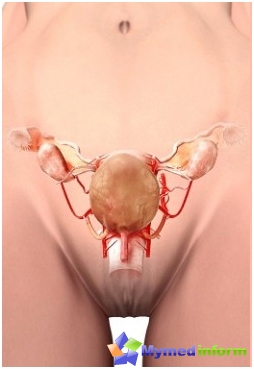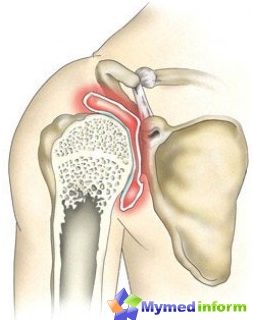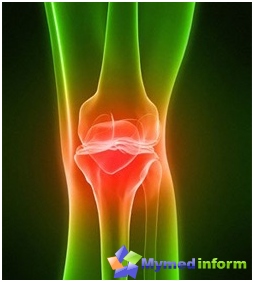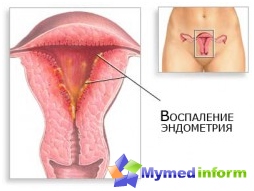Currently, this procedure is widely used in Treatment of Moma Mattika, It allows you to avoid conservative treatment. This procedure is an occlusion (blockage) of blood vessels with a bumping of a femoral artery. Since the operation passes almost painlessly, local anesthesia is appointed to hold it. Over the years, for many years, women with a diagnosis of Misa have prescribed resection, up to complete removal of the uterus. The most frequent indication to the operation was the assumption of the high proposal of the probability of rebirth fibromyoma in malignant education. The amputation of the uterus, which is very hard for women and, as a rule, leads to severe depression, to this day remains the most common way to gynecological hysterectomy (surgery).
Description

The new method was a real salvation for women from a complex operation, due to the possibility of overlapping blood flow supplied with blood fibromatous nodes. As a result of this procedure, myoma is very quickly reduced in size. The embolization of the arteries of the uterus is in the introduction of emblem in the uterine artery, through a small puncture in the groin fold. The endovascular surgeon with the help of X-ray equipment carefully tracks the movement of the catheter inside the artery and consistently leads it to the uterine artery, stopping at the point where it branches. Thus, the therapeutic process consists in puncture of the femoral artery, further katerization of the uterine vessels and the subsequent introduction of the embolisaceous drug, which is stuck in the vessels and overlaps them. The procedure is considered completed after the complete blockage of blood vessels responsible for the mioma blood supply. To achieve a guaranteed result, the embolization of the uterine arteries is carried out on both sides. A confirmation of the cessation of blood supply to nodes is carried out test arteriogram. Pacrol locations are carefully processed by antiseptic solution and are squeezed with a sterile bandage for 12 hours.
Purpose of the method
Clinical classification of uterine misa determines the method of treating patients:
- With small (1-2 centimeters), momas are prescribed combined oral contraceptives (coca) or intrauterine mining system;
- In the presence of a medium-sized mine (3-4 centimeters), two-stage treatment is prescribed;
- when a large mioma is found (over 4.5 centimeters) are prescribed conservative minectomy (mioma removal) or embolization of the uterine arteries;
- Moma on the leg require a laparoscopic (through a small hole) of removal;
- Submucosic (sublimated) misa, up to 3 centimeters require hysteroresteratesectoscopy (intrauterine surgery).
Certain indications and contraindications are existing for embolization of the uterine arteries. Embolization of the arteries of the uterus is allowed in the following cases:
- When the diagnosis of symptomic or growing uterine mioma is established
- When setting the size of the uterus corresponding to Pregnancy from 7 to 20 weeks, But solely with the absence of pathology of endometrial, ovaries and cervix. The embolization with smaller sizes is undesirable because the success of it is quite insignificant;
- With the interest of women in the preservation of the reproductive function, along with the established influence of Moma in the pathogenesis of infertility or the assumption of the high probability of miscarriage;
- When conducting preparatory measures for momectamia (removal of myoma) or hysterorezectoscopy (intrauterine surgery).
- With significant bleeding of uterus of various etiology, in cases where all other treatments are presented to the patient's life.
- Conducting embolization can be contraindicated in cases of detection of an infectious process or the presence of pronounced allergies on the drugs used leading to a quink edema or anaphylactic shock.
Appointment of the procedure recommended:
Advantages of the procedure

The embolization of the arteries of the uterus has several advantages in comparison with other methods of treatment. These include the following positive points:
- Ability to prevent surgical intervention and guaranteed maintenance of the uterus.
- Continuation of the reproductive ability of a woman.
- Avoiding the use of general anesthesia and rapid recovery after eight-hour beddown.
- Lack of large scars and skin damage. Traces from two punctures very quickly disappear.
- In the event of an increase in temperature or pain, which is extremely rare, a sufficiently small course of anti-inflammatory drugs and painkillers.
Numerous feedback from grateful women unanimously indicate that the procedure is absolutely painless and extended no more than 10 minutes. Along with the complete preservation of the uterus functions, the progression of the tumor is completely stopped and its decrease is reduced quite quickly.
At the end of the article, it should be added that at the moment Mimoma, the uterus began to be much more often diagnosed among young girls who not only did not have time to know the joy of motherhood, but also to enter a full adult life. In the contemporary clinic, the embolization of the arteries of the uterus is still quite expensive procedure. However, it should be recognized that this method is really worth. In the total amount of the procedure, the price of an embolizing drug, used tools and materials, the work of the doctor, as well as stay in the hospital.









